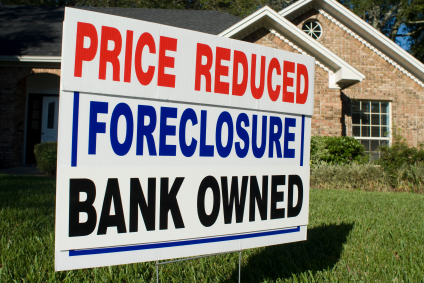 In former home-building hot spots, the housing bust has created a new kind of declining city, different from the nation’s traditional rusting centers of industry that could languish for years.
In former home-building hot spots, the housing bust has created a new kind of declining city, different from the nation’s traditional rusting centers of industry that could languish for years.
Although the causes of the decline in these metropolitan areas are distinct from the loss of employment from shrinking manufacturing and industry in some of the nation’s old industrial powerhouses, these areas could experience fates similar to places such as Cleveland and Detroit, with neighborhoods experiencing high rates of vacancies for a very long time, according to a recently released study.“Some neighborhoods are going to suffer tremendously or are never going to come back or come back very, very slowly,” said James R. Follain, senior fellow at the Rockefeller Institute of Government and author of the study published by the Research Institute for Housing America, a division of the Mortgage Bankers Association.
Potential candidates for long-term decline named by the study are the areas hit hardest by the drop in home prices in recent years. They include Las Vegas, Miami and several inland California metropolitan areas that grew rapidly during the boom, such as Stockton and Modesto.
A traditional city in decline is one that has suffered a sustained population drop, leaving behind empty houses, apartment buildings, offices and storefronts. Cleveland and Detroit, for instance, suffered from the erosion of manufacturing and the loss of residents, who left in search of jobs.
Instead of eroding a particular industry, however, the housing bust left a glut of homes because of overbuilding and the foreclosure crisis. Follain argues that the future of these cities is threatened in similar ways to that of Rust Belt cities. “Long-vacant neighborhoods are going to develop, and we can imagine what can happen,” he said, including potentially higher crime and lower property taxes.
In California, some coastal cities are already seeing a housing market recovery. But inland areas that were built on optimistic assumptions of continued population growth and ever-climbing home values are facing a much more difficult recovery.
Celia Chen, a housing economist with Moody’s Economy.com, predicts that a full recovery in parts of California, Nevada, Arizona and Florida won’t occur until 2030. “The housing boom elevated home prices in a number of areas far, far above what can be supported by the economic fundamentals, and so prices have fallen significantly, and they will remain below their previous peaks easily for a decade, or even two decades,” Chen said.
Some experts contend that foreclosures, which have pierced neighborhoods of all income levels throughout the country, are quickly turning developments on the outskirts of metropolitan areas into the nation’s newest slums. Complicating any recovery for these beaten-down areas is the difficulty in predicting which neighborhoods will fare worst. That uncertainty could lead to increasing skepticism by buyers and lenders looking to make loans on homes in these areas.
“If you are looking at this from the perspective of a home buyer or a lender, it is one thing to say you are in a market where home prices may drop 10 percent or 20 percent,” said Michael Fratantoni, vice president of research and economics with the mortgage bankers group. “That is different from the idea that 80 percent to 90 percent of the value could evaporate. That changes the whole nature of the business.”
Still, the future of these regions remains a point of contention. Economist John Husing argues that the inland regions of California don’t have a long-term problem.
“What has driven the Inland Empire economy is, for the last 30 years, simply the fact that the rest of Southern California is completely out of dirt,” Husing said. “Right now the price differential between coastal counties and inland counties is $100,000. People will ultimately respond to that.”
The development of industrial facilities to handle cargo from Southern California’s ports will also continue inland because they require lots of space, said Husing, principal of Economics & Politics Inc. in Redlands. Such development, he said, will create jobs for workers who will need housing.
(c) 2011, Los Angeles Times.










